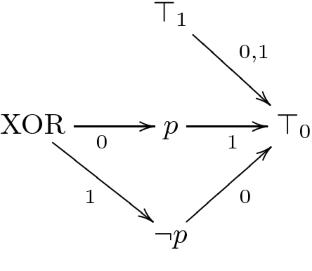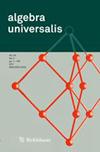具有最大状态复杂度的语言的数量
IF 0.6
4区 数学
Q3 MATHEMATICS
引用次数: 1
摘要
Câmpeanu和Ho(2004)在Champarnaud和Pin(1989)的工作基础上确定了有限语言的最大有限状态复杂性。他们表示,很难确定最大复杂度语言的数量。这里我们给出这个数字的一个公式。我们还将他们的工作从语言推广到有限集上的函数。本文章由计算机程序翻译,如有差异,请以英文原文为准。

The number of languages with maximum state complexity
Câmpeanu and Ho (2004) determined the maximum finite state complexity of finite languages, building on work of Champarnaud and Pin (1989). They stated that it is very difficult to determine the number of maximum-complexity languages. Here we give a formula for this number. We also generalize their work from languages to functions on finite sets.
求助全文
通过发布文献求助,成功后即可免费获取论文全文。
去求助
来源期刊

Algebra Universalis
数学-数学
CiteScore
1.00
自引率
16.70%
发文量
34
审稿时长
3 months
期刊介绍:
Algebra Universalis publishes papers in universal algebra, lattice theory, and related fields. In a pragmatic way, one could define the areas of interest of the journal as the union of the areas of interest of the members of the Editorial Board. In addition to research papers, we are also interested in publishing high quality survey articles.
 求助内容:
求助内容: 应助结果提醒方式:
应助结果提醒方式:


